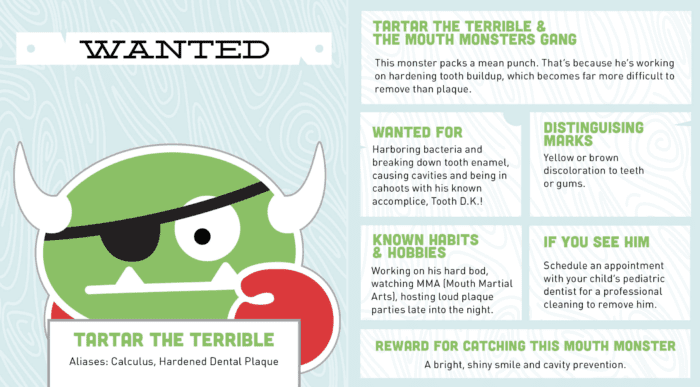Dental Fillings An Overview
Dr. Miller can place a dental filling to address tooth decay and restore the health and integrity of your child’s tooth. Children are at risk for decay from the moment their teeth break through the gums and their diet includes more than just breast milk. Even infants can develop tooth decay which should be treated to avoid losing a primary tooth.
We offer several types of dental fillings to meet the needs of our patients:
- White fillings: made of a biocompatible, composite resin, white fillings are made to match the color of your child’s existing teeth so that they can blend in seamlessly with their smile. This type of filling is also highly durable and more stain resistant than natural tooth enamel.
- SDF fillings: silver diamine fluoride (SDF) is suitable for minor cavities and is a liquid that can be applied over decay to halt progression and avoid permanent tooth damage. This type of filling is often recommended for very young children and special needs patients who may find it difficult to handle a traditional dental filling. The silver colored material will darken the appearance of the treated tooth, a consideration for an older child or a filling in a tooth that is visible when smiling.

Cavity Prevention in Babies and Toddlers
There are several ways parents and caregivers can reduce a young child’s risk of developing tooth decay and maintain the health of primary teeth. Once your baby’s diet expands beyond breast milk or if they are bottle fed from birth, the erupting teeth are subject to the effects of bacteria in the mouth that come from sugars. Managing a young child’s habits can help set the stage for a healthy smile:
- Discontinue at-will breastfeeding once teeth begin to erupt
- Do not let your baby go to bed with a bottle of formula or juice
- Serve juice only from a sippy cup
- Rinse the mouth or serve your child water after a sugary snack or cup of juice
Cavity Prevention in Children and Teens
As your child grows, their diet will expand and they are often eating snacks and meals outside of the home. Hopefully, early oral hygiene habits and a healthy diet will support their dental health but there are also ways to help a growing child minimize their risk for dental problems such as decay and gum disease.
- Encourage drinking water after meals to cleanse the mouth
- Reduce the amount of added sugars in their diet and offer fruits and vegetables whenever possible
- Encourage their daily oral hygiene routine, which should include brushing and flossing

Dental Fillings What to Expect
Dr. Miller will evaluate the condition of the affected tooth and recommend an appropriate treatment option or type of dental filling. In most cases, a white filling is considered the best option. The process for placing a composite filling is relatively simple and is completed in one visit. In most cases, when a cavity is discovered during a routine dental exam we will schedule a separate visit for placing the filling.

The first step is to ensure the comfort of the patient and help them relax while we explain how the dental filling procedure will progress and what to expect. We will numb the area with a local anesthetic and clean the tooth to be treated. Dr. Miller will remove any decay or damaged tooth structure, making sure that all parts of the affected area are free of any signs of infection. The composite material is gently sculpted into place and smoothed so that the bite is not affected and the surface looks and feel natural. Once complete, a special handheld light will be used to cure and seal the filling.
SDF Fillings: What To Expect
SDF fillings are simple to place and recommended in certain circumstances. Painted over a cavity or area of decay, an SDF filling will prevent further infection and damage, stabilizing the health of a tooth. Dr. Miller will monitor the filling to watch for any changes or signs that the SDF is no longer an effective barrier. SDF is not considered a permanent solution and may need to be replaced or a more traditional filling may be recommended at a later date.
Why is the dentist recommending the use of Nitrous Oxide or “Laughing Gas” on my child for dental treatment?
Nitrous oxide, or laughing gas, offers several benefits for pediatric dental patients, making dental visits more comfortable and less stressful. Here are the key benefits:
Helps to Reduce Anxiety/Fear
Children needing dental fillings or treatment done often arrive to the office nervous and afraid. Nitrous oxide helps to relax their nerves.
Promotes Patient Cooperation
A relaxed child is better equipped to remain still and cooperative for treatment.
Quick Onset and Recovery
The effects of nitrous oxide are felt within minutes. Following treatment, the child breathes normal oxygen which clears out the nitrous from his/her system, allowing the patient to resume normal activities and return to school.
Safe and Easily Controlled
Administered through a small mask that sits on the nose, nitrous oxide dosage can be adjusted to suit the child’s needs, ensuring safety, comfort, and lower levels used.
Minimizes Discomfort
Nitrous oxide has an analgesic effect and can reduce the amount of pain experienced by the child during their treatment.
Suppresses Gag Reflex
Nitrous oxide can help minimize the gag reflex. With children having smaller mouths, this helps make dental procedures more comfortable, especially for kids that easily gag.
Positive Dental Experience
By decreasing anxiety and discomfort, nitrous oxide helps to create a positive dental experience, reducing fear of future dental visits for our patients.
Nitrous oxide is a valuable tool in pediatric dentistry, providing a safe and effective means to ensure that children receive necessary dental care in a comfortable and stress-free environment.



